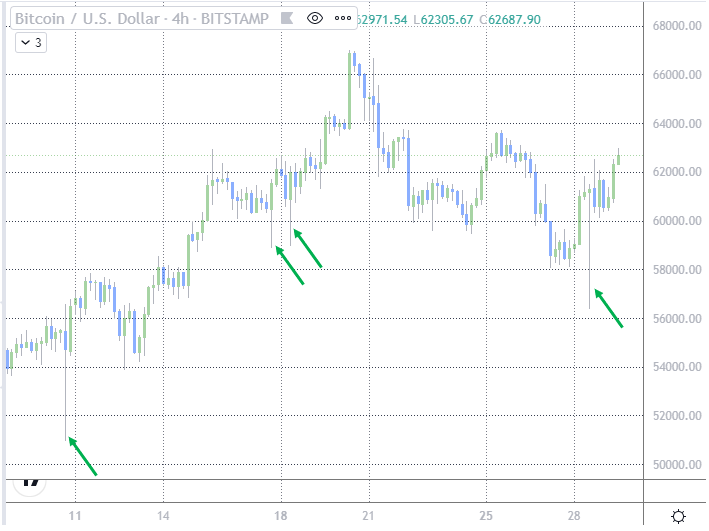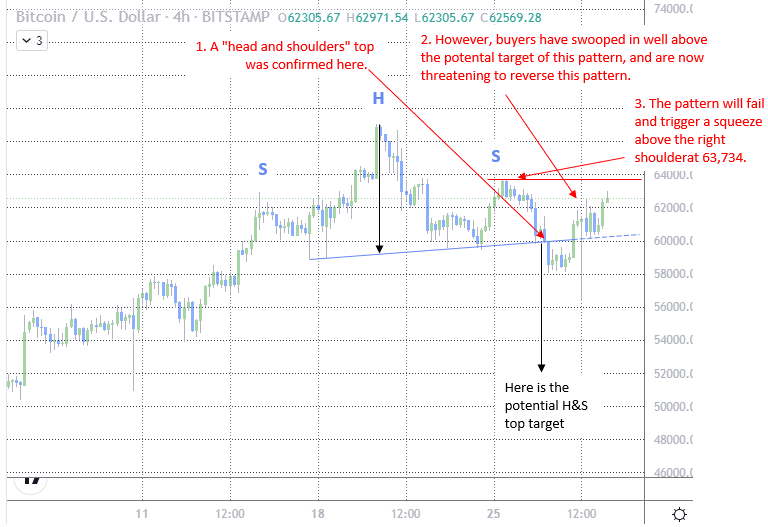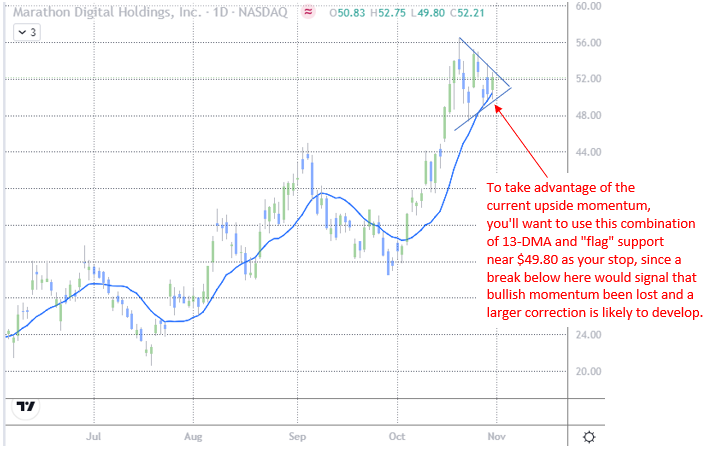Dear Trader,
I’m laser-focused on a very interesting trade setup right now, not because the price pattern looks so good, but actually because it looks like it is going to fail, potentially igniting a squeeze-driven rally.
You’ll come to learn that when patterns fail, they tend to fail miserably.
Why would this be the case?
Because the large crowd of traders that had originally positioned in a manner that would benefit from the pattern are forced to reverse those positions.
And when that failed pattern has a well-defined stop-out point that most traders have used to set their stops, the potential for the “squeeze” action to be more aggressive is elevated.
Today, I’m going to show you the potential pattern failure I’m watching, and I’ll show you how I would play it, should it occur.
Knowledge is power for retail traders
There’s no way to sugarcoat this; retail traders are at a disadvantage when it comes to their ability to compete with the cut-throat tactics of large professional traders.
That’s why it is so important to use proper sizing while having the discipline to piece into trades rather than going all-in at one price level.
I’ve often said that every stock has its own unique volatility characteristic that develops because of the different types of traders that like to trade different stocks.
For example, some stocks attract more day traders than others, and this will typically lead to the stock having higher volatility than a stock that attracts a lot of buy-and-hold inventors.
In the case of Bitcoin and the many stocks that trade based on its movements, “stop-running” is a phenomenon that occurs more than most of the other stocks that I tend to watch.
What is “stop-running?”
“Stop-running” occurs when professional traders with large accounts at their disposal want to hold a long position (in this example), but at lower prices than the shares are currently trading at.
These traders are very good at being able to sniff out when a recent rally has been driven mainly by retail traders, because of the lowish volume that created the rally.
These traders are also very good at identifying situations when these retail traders have clustered their stops in a particular area.
Once they sniffed-out this combination of a weakish rally and a nearby clustering of stops, the large traders will attempt to overpower the retail traders by shorting the asset below that stop cluster, thereby triggering a sell-off below those stops, which those same large traders will be waiting to gobble up.
Please do not be completely disenfranchised about trading based on this, as this is not common practice across the large majority of stocks, especially larger, more liquid stocks.
The key is to arm yourself with the ability to spot a security that may be vulnerable to this type of activity, and that can be done simply by looking at its price history.
Figure 1 below shows an intra-day chart of Bitcoin on a 4-hour basis.
Figure 1

From this chart, we learn that, in the past couple of weeks alone, there have been 4 instances where “stop-runs” have occurred, which were ultimately followed by prices rotating into new rallies.
Yesterday’s “stop-run” (the green arrow furthest to the right) is of particular interest because the large traders that bought up the shares at the lows did so much higher than the downside potential target that is still on the table after this past Wednesday’s confirmation of a popular topping pattern (a “head-and-shoulders” top).
Figure 2 helps describe this in much greater detail.
Figure 2

Why is this setup particularly interesting?
Because it sets the stage for a possible failed “head-and-shoulders” top.
You see, when it comes to an official failure of this type of topping pattern, there are differing schools of thought regarding the point at which the pattern actually fails.
Some traders believe the pattern fails once the price closes above the 61.8% Fibonacci retracement of the right shoulder sell-off (this is not shown on Figure 2).
Others believe the failure doesn’t occur until the price closes above the right shoulder (this is shown in Figure 2).
It never hurts to play it safe by following the latter rule of looking for a close above the right shoulder.
Therefore, I’ll be watching very closely for this development next week, as it could spark a squeeze-drive surge in Bitcoin and some of the stocks that trade closely with it.
This is one way how a Bitcoin squeeze can be played
One stock I am watching right now is Marathon Digital Holdings, Inc. (MARA).
Based in Las Vegas, Nevada and founded in 2010, MARA operates as a digital asset technology company that mines cryptocurrencies with a focus on the blockchain ecosystem and the generation of digital assets in the United States. The company was formerly known as Marathon Patent Group, Inc. and changed its name to Marathon Digital Holdings, Inc. in February 2021.
As Figure 3 shows, I find MARA’s setup interesting for a few of reasons:
- The stock appears to be taking a breather in the form of a “bullish flag” after a big runup.
- The stock trades a lot like Bitcoin, which means it could rally in sympathy if the failed pattern scenario describe above for Bitcoin materializes
- The stock is currently holding support from my favorite short-term moving average, the 13-day moving average, which means the stock still has upside momentum.
Figure 3

As Figure 3 also shows, to take advantage of the current upside momentum,
you’ll want to use this combination of 13-DMA and “flag” support near $49.80 as your stop since a break below here would signal that bullish momentum has been lost and a larger correction is likely to develop.






6 Comments
Jeff
I’ve gotta reread this about 3 times at least
It’s making my head hurt
🤓 but it’s definitely interesting
Pete
Great info
Jeff – Spot on. I have targets for MARA this expiration 11/05.
Knowledgeable i like it. Thank you very much
Thanks, Jeff! Always great! KD
Thanks appreciate the kind response KD! -The RagingBull Team